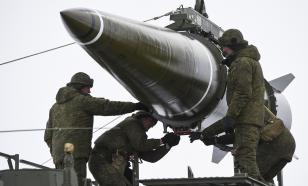Russia Has Lost its Army
The armed forces of Russia are in such a condition that we have definitely come off second-best
The Russian army needs modern helicopters, Russia Air Force Commander-in-chief Colonel General Vladimir Mikhailov told RIA Novosti Monday. "The number of modern helicopters of the Ka-50 Black Shark and Mi-26 class makes up about 10 per cent of the total helicopter fleet in Russia's Air Force." The commander-in-chief says that operational condition of the country's aviation technology is a bit over 35 per cent now, making it the most sensitive issue for the Air Force.

Vladimir Mikhailov added that the helicopter fleet at present mostly consists of outdated helicopters, mostly Mi-8 and Mi-24 models. The commander-in-chief said the alertness of Russia's helicopter units is mostly maintained through thorough repairs and renewal; thanks to prolongation of the resources of helicopters and basic units. The helicopter fleet is from time to time supplied with new spare parts, primarily rotor.
Everybody knows the troubles of the Russian army: lack of financing, outdated technologies, low fighting efficiency and so on. High-ranking Army officials are continuously speaking about these problems, but nothing has changed. What is the most effective course of action to return Russian's army its bygone might and potential?
The army needs money
Spending for the military and security forces next year amounts to 27 percent of the federal budget. If we look into the document closely, we will see that budgetary spending meant for the army makes up a considerable share of the total amount: the spending meant for the budget-related military - the army and law enforcement structures - makes up 27.5 per cent of the budgetary revenues. To compare, the spending meant for health care, education and science in 2004 makes up only 7.6 per cent, which is 3.5 times lower than for the army and law enforcement structures. Russia's Defense Minister Sergey Ivanov said that the budget for 2004 has provided for the minimal needs of the army.
In 2003, budgetary spending on the army and security made up 18.4 per cent. Spending meant for social needs in the Israeli budget, in comparison, made up 31 percent in 2003. The comparison between Russia and Israel reveals that Israel is not a poor county at all.
Russia has retrieved its leading position in the weapons export. According to different estimates, earnings for weapons export last year was in the area of $5 to 6 billion. To compare, American earnings were less than $4 billion, Russia's Argumenty i Fakty (Arguments and Facts) newspaper reports. Nobody could expect such a success from the dying Russian defense establishments ten years ago. One might expect that the considerable sums earned by the defense establishment from weapons export could revive the defense establishment. The other day, Army General Andrey Nikolayev, the chairman of the Duma Defense Committee has said: "The crisis and mass bankruptcy of defense establishments hamper settlement of problems in the framework of reforming the army and guarantee adequate defensive capacity. The present-day condition of the armed forces allows one to say we have already come off second-best. There can be no army without modern industrial production."
Where is money earned due to contracts concluded by Russia's defense establishments? Director General of the MiG aviation corporation Nikolay Nikitin says that about one tenth of the export earning is spent on new developments. In May 1996, Director General of the Sukhoi Design Bureau Mikhail Simonov wanted the president of Russia to appropriate 10-12 per cent for this purpose. Within the past six years, the Sukhoi design bureau has supplied over 160 new Su fighters to the foreign markets, to China, Vietnam and India. Money earned from these exports is not less than $5 billion.
However, not all defense establishments invest in new military technology for the Russian army. Money is mostly spent on technologies that is in demand on the international market. That is why there is almost no full-scale production of new weapons in Russia. The leadership of the RF Defense Ministry has several times requested a percentage of the earnings, $200-300 million per year, for new equipment for the army. The clause 2 of the law "On the state military order" does not allow the military to appropriate money directly for this purpose. As a result, the share of new weaponary in the Russian army is just 30 per cent instead of the 60 per cent traditional for the world practice. The deterioration of the aviation fleet stands at 80 per cent. It is paradoxical that Russia helps equip other countries' armies.
According to the national arms program, Russian troops will start receiving modern military weapons in 2008-2010. It is expected that majority of Soviet-made planes, tanks, vessels that are currently being modernized will be written off during that time.
Smart weapons are much more expensive than the military technique used by the Russian army today. This is the reason why the RF Defense Ministry does not purchase them. No matter what the army commander-in-chief says, the situation does not change either for the better or for the worse. The talks of this kind are just a convenient opportunity to wave aside the responsibility for military problems.
A lion's share of the export earnings obtained by the defense establishments is spent to repay the foreign debt. Russia has promised to repay debts valued at several billion dollars ahead of the previously scheduled date.
Subscribe to Pravda.Ru Telegram channel, Facebook, RSS!


